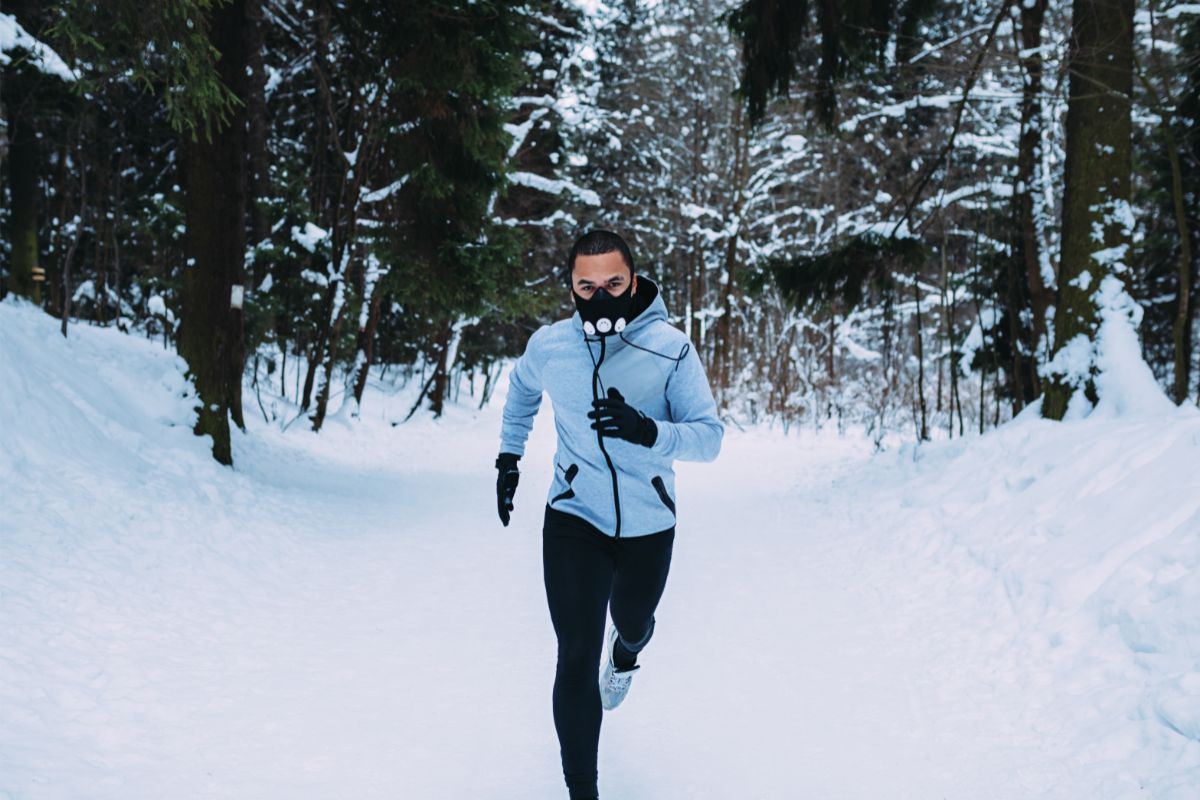How to Run in the Snow? Tips for Safely Navigating Your Winter Runs

Many people have a love-hate relationship with snow. Children love it because it probably means a day off school and it’s super fun to play in.
On the other hand, many people hate the snow because it causes disruption to their daily activities and slush is a huge hazard.
If you are a keen runner, you might like the challenge or take it as a sign to have a rest day. For those that want to stick to their running schedule but are unsure how to go about running in the snow, we are here to help.
This article will discuss how to run in the snow and how to stay safe while doing so.
Is It Safe To Run In The Snow?
As long as a runner has all the right equipment and they do not have any underlying medical conditions that may harm them in the cold, it’s absolutely fun for runners to run in the snow.
Not only can you embrace your inner child, but the change in terrain can also be a good challenge.
Some runners love being outside when it’s bitterly cold. But how cold is too cold to run? Check our article on tips to stay warm on winter runs.
What To Wear On Your Feet
The best way to prepare yourself for running in snowy conditions is to have the right shoes on your feet. Snow and ice come hand in hand, so it’s important to consider that ice may also be something you encounter on your run.
Trail running shoes work well in the snow, but they don’t always offer enough traction in icy conditions. The main qualities that you need to look for in cold running shoes are:
- Waterproof outer layer
- Lugs
- Durable upper mesh laters
- Integrated knit socks
Essentially, look for a trainer that allows your feet to stay warm and dry, your body to stay upright, and your ankles to be protected.
Research is key here, as everyone has different needs and will have different terrains in mind when purchasing these shoes.
Choose The Right Trail
When running in the snow, it’s best to choose trails that are less likely to have ice on them. Icy conditions mean there is less traction and a greater chance of slipping and injuring yourself.
Stick to paths that have fresh snow, this may require a little more energy output but it’s definitely safer. Make sure you are aware of the paths you are following.
Snow can hide a number of things, including holes and potentially sharp objects or branches.
Therefore, stick to paths or trails you know that have fresh snowfall on them.
How To Run In The Snow
Take things much easier than you would with a normal run to account for the conditions. The cold may make it harder for you to breathe and your body will have to work harder to adjust to the new terrain.
It’s also better to be safe by keeping things nice and slow. This can be a great opportunity to take in your surroundings and have a leisurely jog rather than trying to smash your personal best.
Are There Benefits Of Running In The Snow?

Yes, there are some benefits to running in the snow. The unfamiliar terrain means you use a different group of muscles so it can help in building strength, here your glutes, hips, and lower back muscles are all more engaged and work harder.
Not only does running in the snow boost your physical strength, but it can also help build your mental resilience as it is a tougher challenge.
With the combination of cold weather, tough terrain, and dodging potential ice patches there is much more to consider.
Another great advantage of this is adding variety to your routine and training. However, it could be argued that the main benefit of running in the snow is simply to enjoy your surroundings and have a change of scenery.
Tips For Running In The Snow
1. Run Around Mid-Day
In the middle of the day, the temperatures are a little warmer, which means it’s easier to avoid ice as the sun will hopefully start to melt it.
The conditions are likely to be safer and if you run into trouble there will be more people around to help you.
2. Wear The Appropriate Clothing
The appropriate clothing is a make-or-break factor when running in the snow. It doesn’t matter if you’re slower than usual as the run will be much tougher.
If you don’t have the right equipment then you’ll likely get frostbite or hypothermia, which are extremely dangerous.
3. Adjust Your Pace And Stride
As we mentioned earlier, don’t try to run too fast. Adjusting your stride is also important in the snow. Shorter strides will offer you more balance and stability, which means you’re less likely to fall and potentially injure yourself.
4. Don’t Push Yourself Too Much
Always stick to your limits. When the terrain seems icy and dangerous, try and walk around it or avoid it altogether. If you find things too tough then you can walk for a bit and just enjoy yourself.
The worst thing you can do is stay still as your body temperature may start to drop.
What About Ice?
Where there is snow, there will be ice. Although it may seem like a fun thing to run and slide on ice, it’s actually extremely dangerous.
Black ice is the most dangerous form of ice as it blends in easily with its surroundings and should be avoided at all costs.
When a path or trail seems icy, walk around it if possible. If you have lugs, you should be able to safely cross the outskirts of the ice. Always do this as slowly as possible to avoid slipping.
The Bottom Line
Running in the snow can be so much fun, but it can only be this way if the runner is properly prepared. Every runner will have to adjust to the different terrain and temperatures with the appropriate clothing and equipment.
Always be prepared, and don’t do anything that doesn’t feel safe. Happy running!
As with running in the snow, you must also prepare for running in the rain. Exposure to colder temperatures and conditions may lead to illness. So, can you get sick from running in the rain? Basically, no, but you can read more on this in another article.






